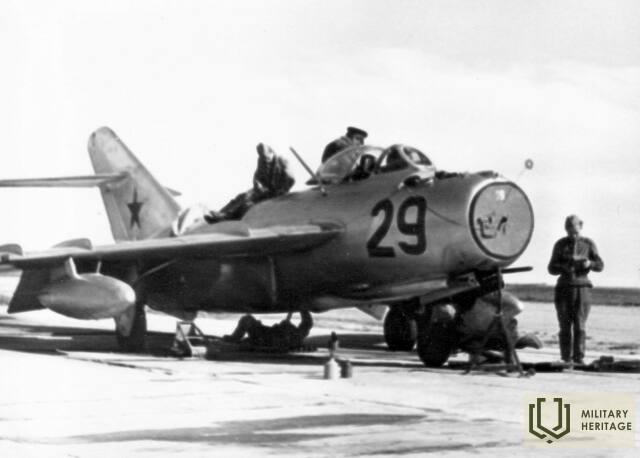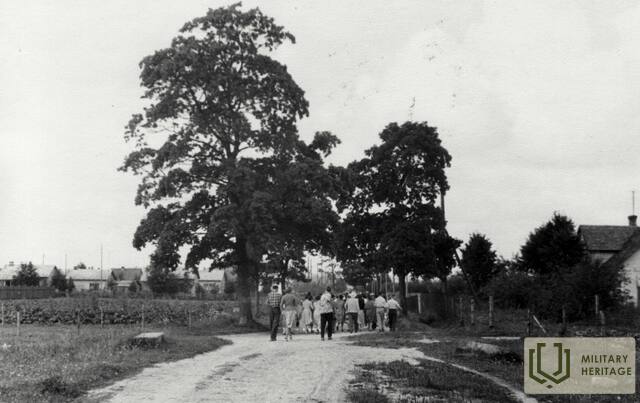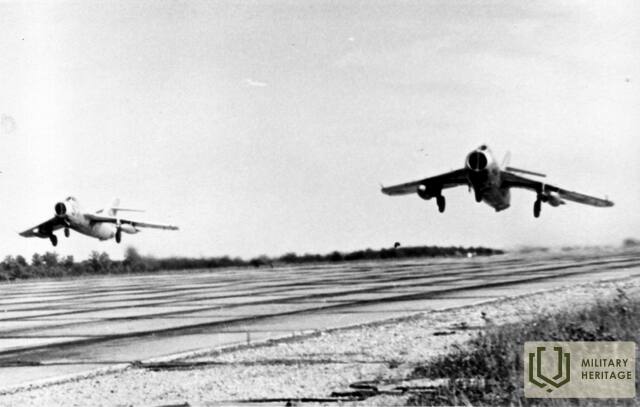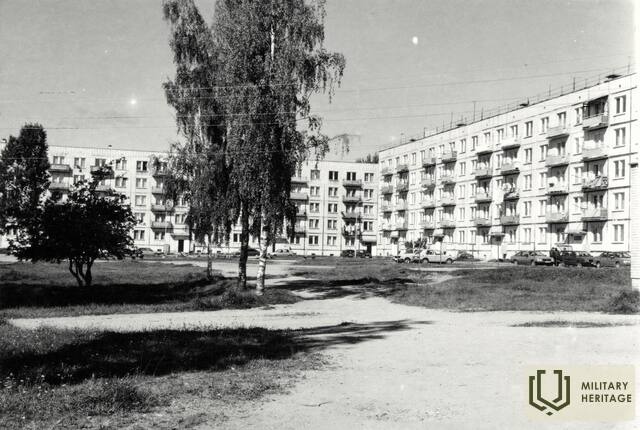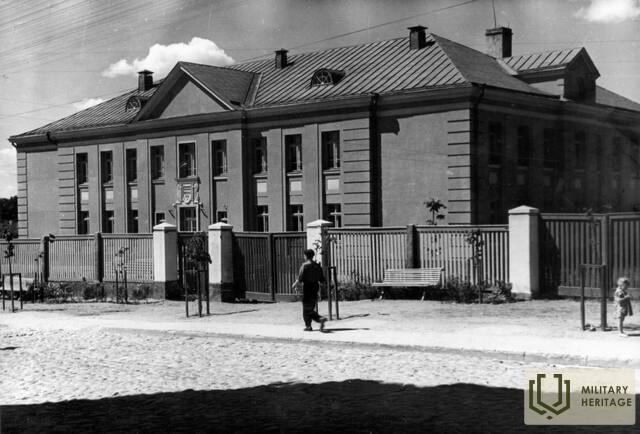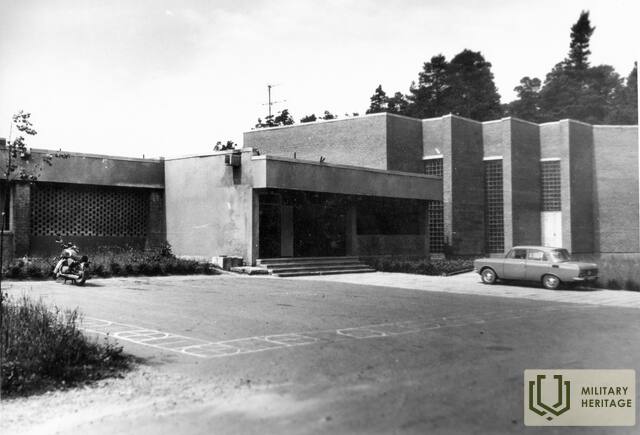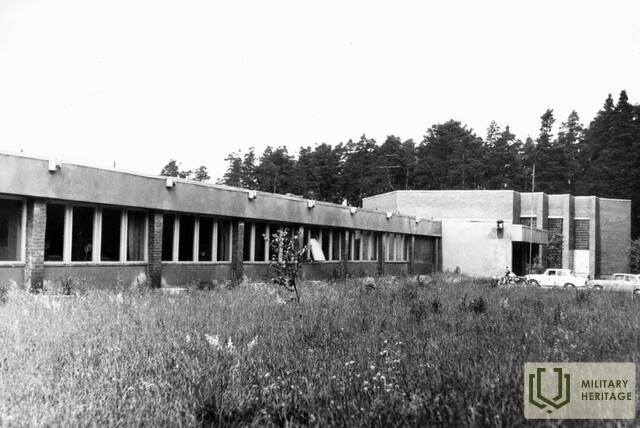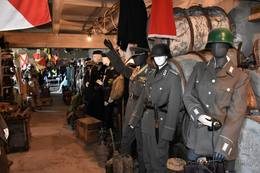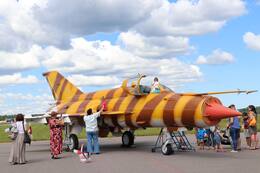Tukumo aerodromo paslaptis
Tukumo aerodromas saugo paslaptį, kurios niekas dar neišaiškino – ar aerodromo teritorijoje tikrai yra branduolinės raketos branduolinė galvutė, kurią ten iškasė Rusijos armijos specialiosios tarnybos po to, kai aerodromas buvo apleistas 1990-aisiais?
Kiekviena istorija turi savo pradžią – ši prasidėjo nuo vyro, kuris sutiko už nedidelį mokestį pasidalyti itin slapta informacija. Būtent, jis žinojo, kad Tukumo aerodromo teritorijoje buvo užkasta branduolinės raketos branduolinė galvutė. Tai esą buvo Rusijos armijos specialiųjų tarnybų „dovana“, kai jos paliko aerodromą 10-ajame dešimtmetyje. Vyras tvirtino aplankęs pavojingą vietą su radiacijos matuokliu, o rodmenys buvo aiškūs – radiacijos lygis buvo padidėjęs. Bet kas gi nutiks, kai branduolinės raketos sviedinys subyrės?!
Mūsų šaltinis nenorėjo atskleisti jo vardo, todėl vadinsime vyrą Saulučiu – dėl jo sutrikusios šypsenos, kuri visiems, išskyrus Saulučio tėvą, atrodytų draugiška. Šis piktai pareiškė, kad vagį pasiims ir namo neparsives; nebepajėgs pakęsti tokios girto nelaimės!
Gana sutrikęs Saulainis pradėjo pasakoti, kad kažkada čia dirbo techniku, bet tam tikroje aerodromo dalyje įsikūręs „kurčnebylis“ dalinys (tylioji armija arba armijos slaptoji tarnyba) – niekas nežinojo, ką jie ten iš tikrųjų veikia – bet kokie pokalbiai buvo draudžiami. Na, o dešimtojo dešimtmečio pradžioje, kai sovietų armija paliko aerodromą, Saulainis restorane kalbėjosi su aukštu karininku, kuris gyrėsi, kad latviams palikta „dovana“ – 30 m gylyje užkasta branduolinė galvutė; po 12 metų konteineris, kuriame ji yra, suirs ir gausime tiek daug radiacijos, kad atrodys nedaug... Saulainiui sąžinė neleido tylėti, todėl šią informaciją jis perdavė laikraščiui... Na, bent jau radioaktyvioji spinduliuotė yra tai, ką galima specialiai ištirti, todėl nuėjome pas pažįstamą pasiimti dozimetro. Neįtikėtina, bet pasisekė. Nuvažiavome į aerodromą ir šį kartą sustojome prie buvusio garažo teritorijos vartų – anot Saulaino žinutės – netoli nuo vietos, kur buvo laikoma bomba. Jis neatskleidė, kur tiksliai ji buvo iškasta – branduolinei galvutei suaktyvinti buvo įdėta 150 gramų molibdeno, bet molibdeno kaina juodojoje rinkoje – 28 000 eurų už gramą! Tai neva buvo Saulainos šansas tapti milijoniere! Dozimetras vis dar tylėjo, o mūsų gidas paaiškino tik tiek, kad reikėjo matuoti virš užkastos bombos – būtent, maždaug 300 m į šiaurę nuo vartų. Kiek? Per trumpą slaptą misiją išžvalgiau teritoriją ir – ir šį kartą dozimetras tylėjo. Aptverta teritorija nebuvo didelė – tolimajame jos kampe buvo dvi požeminės sandėliavimo patalpos su užrašais ant durų – „Sandėliavimo patalpa Nr. 5“ ir „Nr. 4“. Sprendžiant iš medinių tvorų, jose kadaise buvo laikomos daržovės. Toliau į vakarus buvo įspūdingas bunkeris su dviem angarais, apaugęs medžiais, o, kas svarbu, šios teritorijos perimetro kampuose buvo betoniniai kulkosvaidžių lizdai – identiški tiems, kuriuos mačiau pernai Vokietijoje, buvusioje sovietų armijos raketų bazėje, kur iš tikrųjų buvo laikomi branduoliniai ginklai. Taigi, čia turėjo būti kažkas reikšmingo, tačiau nebuvo jokių ženklų, kad būtų galima numesti mirtiną krovinį 30 m gylyje.
Kažkas iš legendų ir tiesos
Saulėtasis vyras pasakojo, kad bomba buvo įdėta į 5 cm storio švininį konteinerį, ir net jei manytume, kad ji sveria tik 52 kg, kaip teigia kai kurie neoficialūs šaltiniai, net ir tada tektų įdėti nemažai darbo, norint iškasti 30 m gylio šachtą (duobe jos nepavadintum).
Apklaustų Tukumo gyventojų liudijimai prieštaringi – vieni teigia, kad 1990-aisiais Rusijos armija tokios įrangos neturėjo – didesnė įranga buvo nuomojama iš Šlokenbeko, net vejapjovė pasiskolinta iš vietinio sodo centro. Tačiau yra ir tokių, kurie visiškai tikri – mes neįsivaizduojame, kas čia buvo ir kokias galimybes turėjo sovietų armija... Legendos apie požeminius tunelius vis dar gyvos – vienas iš buvusių aerodromo sargybinių (tuo metu, kai aerodromą valdė žemės ūkio bendrovė „Durbe“) pasakoja, kad Jauntukumo pakilimo tako pusėje buvo ženklas „Neišeiti iš pakilimo tako“ (tokio ženklo niekur kitur nebuvo). Sklando gandai, kad šioje vietoje driekiasi požeminis tunelis. Entuziastai apžiūrėjo vietą specialiu matavimo prietaisu, ir jis tikrai rodė tuštumą po žeme. Žinoma, oficialaus šios versijos patvirtinimo nėra. Reikėtų pažymėti, kad vėliau sutiktas Saulės pažįstamas, dozimetro savininkas, neigė istoriją apie padidėjusią radiaciją aerodrome; nieko panašaus nebuvo – aerodrome kažkada stovėjo dvi metalinės talpyklos su radonu, o radiacija jose šešis kartus viršijo normą. Kol jie svarstė, ką su jomis daryti, čigonai spėjo jas supjaustyti į metalo laužą; dabar jos tikriausiai vaikšto spinduliuojančios, jei dar vaikšto... Tokia yra istorija, kurios galimo teisingumo šiuo metu neketina tikrinti nė viena valstybės institucija.
Straipsnis iš laikraščio „Nepriklausomos Tukuma naujienos“
Susijusios temos
Susijusios vietos
Privati karinė kolekcija Mundigciems mieste
Privati karinė kolekcija Mundigciemse. Aivaras Ormanis jau daugelį metų kolekcionuoja istorinius objektus – karines uniformas, uniformas, maskuojamuosius drabužius, ryšio priemones, namų apyvokos daiktus, apsaugos priemones iš įvairių laikotarpių ir šalių, datuojamus Antruoju pasauliniu karu, sovietų armija ir nepriklausomos Latvijos atkūrimu.
Šiuo metu kolekcija nėra gerai prižiūrima, o eksponatai saugomi buvusiame kolūkio tvarte.
Aviacijos muziejus „SKY ZOO“
Aviacijos muziejus „Sky Zoo“ yra Smārdės valsčiuje, Tukumo savivaldybėje, Jūrmalos oro uosto teritorijoje, kuri anksčiau buvo Tukumo karinis aerodromas. Ekspozicijoje eksponuojami lėktuvai YAK-40, AN-2, SU22M4, PZL TS-11 Iskra ir sraigtasparnis MI-24. Ekskursijos po aerodromą metu apžiūrimi angarai, kaponieriai ir inžinerinė įranga. Aerodromą naudojo tiek Vokietijos, tiek Sovietų Sąjungos armijos. Sovietų okupacijos metu tai buvo vienas svarbiausių karinių aerodromų Latvijos teritorijoje. Jame dislokuoti naikintuvai buvo skirti atakuoti priešo laivus ir bombarduoti pakrantės įtvirtinimus. 1975 m. lapkričio 9 d. naktį Tukumo aerodrome buvo gautas kovos signalas – Sovietų Sąjungos teritoriniuose vandenyse (Rygos įlankoje) buvo priešo karo laivas, kurį reikėjo sunaikinti. Iš Tukumo pakilo keli lėktuvai. Tačiau paaiškėjo, kad ginkluotas maištas prieš esamą sovietų režimą įvyko sovietų karinio jūrų laivyno karo laive „Storoževoi“ („Globėjas“). Lėktuvams pasiekus karo laivą, mūšis dar tęsėsi. Vėliau sukilėlių vadas Valerijus Sablinas, sovietų karinio jūrų laivyno karininkas, buvo sužeistas, o maištas baigėsi. Jam buvo skirta mirties bausmė už išdavystę. Tai buvo vienas dramatiškiausių įvykių, rodančių nepasitenkinimą režimu ir žyminčių artėjantį jo žlugimą.




